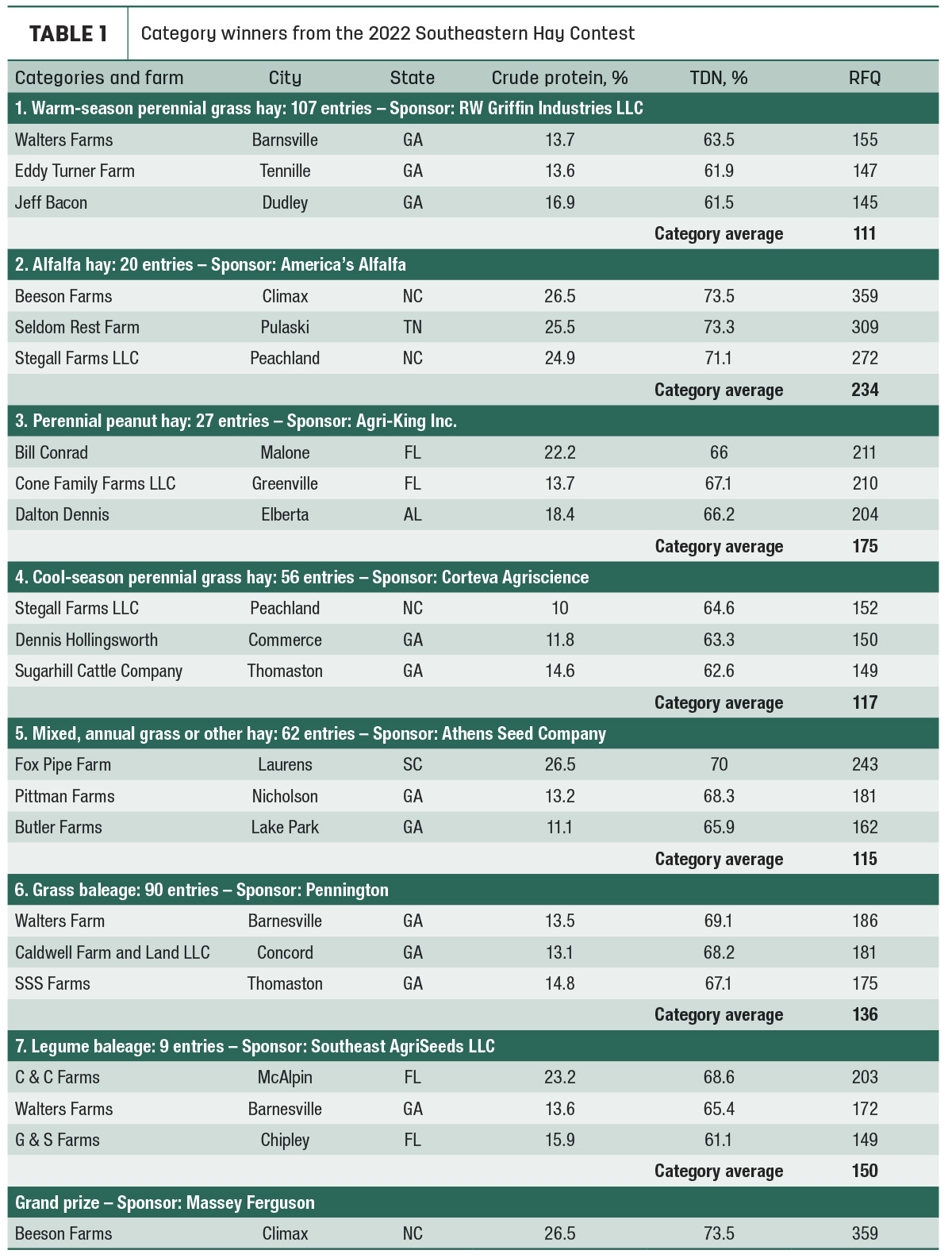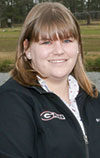The Southeastern Hay Contest (SEHC) proudly recognizes regional producers who grow and harvest high-quality hay. Although we are all growing weary of the word “unprecedented,” there is no better word to describe this forage-production season. Producers faced many difficult decisions this season with respect to managing high input costs. With record fertilizer and diesel prices, even the simplest task in the hayfield was scrutinized for its economic return. We want to praise our local and state extension personnel for aiding in these decisions and educating producers on how best to balance agronomic productivity with economic benefits.
On top of financial challenges, Mother Nature threw us a few curveballs in the Southeast this season. Many producers encountered extended periods of drought or heavy rain, depending on the time of year, neither conducive for a successful hay harvest. High rainfall periods can also make insect control a challenge, especially for timing applications for the bermudagrass stem maggot and fall armyworms. It is not surprising that hay market reports are illustrating a downward trend in available hay for purchase. The severity of these implications will be felt this fall and winter as livestock producers are forced to make tough choices with regard to supplementation strategies. Hay testing will be more important than ever before.
The SEHC continues to fulfill its mission to bring awareness to the importance of hay testing and of managing feed demands based on nutritive value. The SEHC is celebrating its 18th year with 371 entries coming from nine states across the Southeastern region. Producers can enter the SEHC in seven categories of hay and baleage: warm-season perennial grass hay, alfalfa hay, perennial peanut hay, perennial cool-season grass hay, mixed and annual grass hay, grass baleage and legume baleage. Samples are ranked based on relative forage quality (RFQ), and the top three entries in each category receive a cash prize. The overall winner also receives a choice of the use of a new Massey Ferguson DM Series disc mower or RK Series rotary rake for the 2023 hay production season, plus $2,000 in cash.
Despite the aforementioned challenges, we have seen some of the highest RFQ indexes ever. This year’s winners are presented in Table 1. Our top prize goes to Beeson Farms in Climax, North Carolina, with an alfalfa hay that broke the scale at an RFQ of 359. The SEHC award ceremony was held at the Sunbelt Ag Expo, where winners were announced on Oct. 18, 2022.

The SEHC continues to increase their reach and strengthen their commitment to education. In the upcoming year, we aim to host our second Southeastern Hay Short Course in Virginia, lead a sponsored session on forage establishment at the American Forage and Grassland Conference, and more. Again, we would like to acknowledge the efforts of our extension agents who engage producers and collect samples, and our many sponsors who support each of the categories. We encourage you to continue the tradition and “prove your hay is the best” by submitting samples to next year’s contest. Submissions are open year-round. Check the Southeastern Hay Contest website for more information, or contact your local county agent or forage extension specialist.
The SEHC is a partnership between cooperative extension and private industry who make this event possible.











